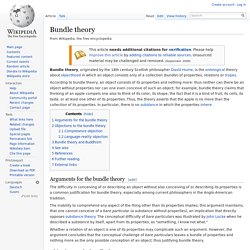

BILL BILL BILL BILL BALE BALE PALE PAIL MAYO. Jon Ronson: Strange answers to the psychopath test. Split-brain. Split-brain is a lay term to describe the result when the corpus callosum connecting the two hemispheres of the brain is severed to some degree.

It is an association of symptoms produced by disruption of or interference with the connection between the hemispheres of the brain. The surgical operation to produce this condition results from transection of the corpus callosotomy, and is usually a last resort to treat refractory epilepsy. Initially, partial callosotomies are performed; if this operation does not succeed, a complete callosotomy is performed to mitigate the risk of accidental physical injury by reducing the severity and violence of epileptic seizures. Before using callosotomies, epilepsy is instead treated through pharmaceutical means.
After surgery, neuropsychological assessments are often performed. The same effect occurs for visual pairs and reasoning. History[edit] Wason selection task. Each card has a number on one side, and a patch of color on the other.

Which card(s) must be turned over to test the idea that if a card shows an even number on one face, then its opposite face is red? The Wason selection task (or four-card problem) is a logic puzzle devised by Peter Cathcart Wason in 1966.[1][2] It is one of the most famous tasks in the study of deductive reasoning.[3] An example of the puzzle is: You are shown a set of four cards placed on a table, each of which has a number on one side and a colored patch on the other side.
The visible faces of the cards show 3, 8, red and brown. Which card(s) must you turn over in order to test the truth of the proposition that if a card shows an even number on one face, then its opposite face is red? A response that identifies a card that need not be inverted, or that fails to identify a card that needs to be inverted, is incorrect. Solution[edit] The correct response is to turn over only the 8 and brown cards. Bundle theory. According to bundle theory, an object consists of its properties and nothing more: thus neither can there be an object without properties nor can one even conceive of such an object; for example, bundle theory claims that thinking of an apple compels one also to think of its color, its shape, the fact that it is a kind of fruit, its cells, its taste, or at least one other of its properties.

Big Five personality traits. In psychology, the Big Five personality traits are five broad domains or dimensions of personality that are used to describe human personality.

The theory based on the Big Five factors is called the five-factor model (FFM).[1] The five factors are openness, conscientiousness, extraversion, agreeableness, and neuroticism. Acronyms commonly used to refer to the five traits collectively are OCEAN, NEOAC, or CANOE. Beneath each global factor, a cluster of correlated and more specific primary factors are found; for example, extraversion includes such related qualities as gregariousness, assertiveness, excitement seeking, warmth, activity, and positive emotions.[2]:24 The Big Five model is able to account for different traits in personality without overlapping.
Empirical research has shown that the Big Five personality traits show consistency in interviews, self-descriptions and observations. §Five factors[edit] Openness to experience: (inventive/curious vs. consistent/cautious). Synesthesia. How someone with synesthesia might perceive (not "see") certain letters and numbers.

Synesthetes see characters just as others do (in whichever color actually displayed), yet simultaneously perceive colors as associated to each one. Synesthesia (also spelled synæsthesia or synaesthesia; from the Ancient Greek σύν syn, "together", and αἴσθησις aisthēsis, "sensation") is a neurological phenomenon in which stimulation of one sensory or cognitive pathway leads to automatic, involuntary experiences in a second sensory or cognitive pathway.[1][2][3][4] People who report such experiences are known as synesthetes. Difficulties have been recognized in adequately defining synesthesia:[5][6] many different phenomena have been included in the term synesthesia ("union of the senses"), and in many cases the terminology seems to be inaccurate.
A more accurate term may be ideasthesia. Characteristics[edit] There are two overall forms of synesthesia: projecting synesthesia and associative synesthesia. Gestalt psychology. Gestalt psychology or gestaltism (German: Gestalt – "shape or form") is a theory of mind of the Berlin School.

The central principle of gestalt psychology is that the mind forms a global whole with self-organizing tendencies. This principle maintains that the human mind considers objects in their entirety before, or in parallel with, perception of their individual parts; suggesting the whole is other than the sum of its parts. Gestalt psychology tries to understand the laws of our ability to acquire and maintain meaningful perceptions in an apparently chaotic world.
In the domain of perception, Gestalt psychologists stipulate that perceptions are the products of complex interactions among various stimuli. Contrary to the behaviorist approach to understanding the elements of cognitive processes, gestalt psychologists sought to understand their organization (Carlson and Heth, 2010). Origins[edit] Gestalt therapy[edit] Theoretical framework and methodology[edit] Why We Believe in Gods - Andy Thomson - American Atheists 09.